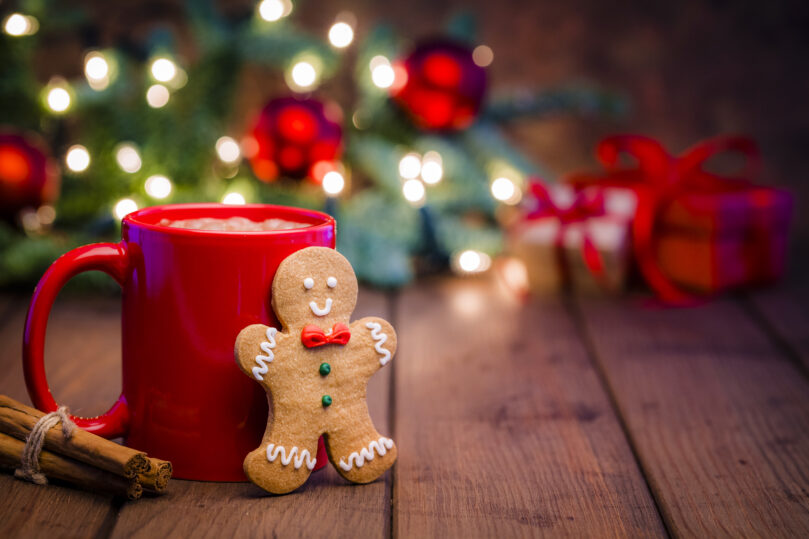How to make the most of a very un-Christmassy year
2020 has been a very, very long year for all of us. While some people are still stuck in home office and students are trying to stay awake during a full day of Zoom lectures, essential workers have to travel to their workplaces to keep our system and the economy running. From going into lockdown and easing restrictions to playing an endless political ping-pong match, 2020 really felt like the final season of an overly dramatic sitcom. While we lived through an actual pandemic, which will very likely be documented in our history books, we also got rid of an actual political progress blocker (we all know who I am talking about). We
witnessed abrupt political change and the election of the very first female and PoC vice president – there is hope. As we are now only one tiny step away from Christmas, it is time to focus and reflect on the positive aspects of 2020, which hopefully include having learned a new language. To expand your German vocabulary even further, the following guide presents some very German/Swiss Christmas traditions, which will hopefully get you in the mood of learning even more about the language and the culture in (a hopefully better) 2021.
Der Adventskalender (pl. die Adventskalender – Advent calendar)
One of the most important parts of a German/Swiss Christmas and especially the time leading up to Christmas is “der Adventskalender” (Advent calendar). This product of genius German engineering usually consists of 24 pieces or “Türchen” (das/die Türchen – small door), which represent the 24 days before Christmas. On every day in December, you get to open one small door and either shake a piece of chocolate or a small present (das Geschenk/die Geschenke) vigorously out of it (usually, this process requires very nifty fingers). However, this practice is not only restricted to children. I am very proud to announce that I am almost 25 years old and have never gone a year without an Adventskalender, as my German mum is on the mission of getting one for me every year. When I lived in London, she even shipped it to England.
Der Adventskranz (pl. die Adventskränze – Advent wreath)
After having ruined your fingers with your Adventskalendar, it is now time for even more decoration and symbols which lead the way to Christmas (das Weihnachten). Usually purchased at a Christmas market, the “Adventskranz” (pl. die Adventskränze – Advent wreath) is a very crucial part of a German/Swiss Christmas celebration. Positioned in center of the dining table, a candle (die Kerze/die Kerzen) is lit every Sunday before Christmas, announcing the first, second, third, and fourth advent. In the modern age, it is not Christmas until you see 45 posts of lit Adventskränze on Facebook or Instagram and this is completely fine. This has also been a tradition throughout my entire lifetime, with my mum sometimes panicking if she has not bought the Adventskalendar before the first advent. This year, this was due to the fact that “Weihnachtsmärkte” (der Weihnachtsmarkt/die Weihnachtsmärkte – Christmas market) have not been as prominent. Thanks, Covid-19 – brilliant job!
Der Weihnachtsmarkt (pl. die Weihnachtsmärkte – Christmas markets)
We now arrive at our final destination of a German/Swiss Christmas – der Weihnachtsmarkt (pl. die Weihnachtsmärkte). If you have not been to one, you really need to do it as soon as the pandemic decides to calm down. At a Weihnachtsmarkt, the whole village or city gets together to get into the Christmas mood. Usually, a lot of goods such as Raclette and Adventskränze are sold. However, Weihnachtsmärkte are probably the most famous for one thing, namely Glühwein (der Glühwein/die Glühweine – mulled wine). Believe me, if you have not blacked out from too much Glühwein, you are not yet fully integrated into German/Swiss culture. It also works really well as an afterwork activity to get to know who your coworkers exactly are.
On this note, I hope you have a lovely festive season and an amazing New Year! Let’s all pray for a better 2021 and even better language learning!
Frohe Weihnachten und ein Frohes neues Jahr!

